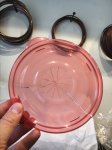Grant Hamby
Shohin
I've been running the Radialayer™ through my mind for a couple weeks now, trying to think of ways to improve upon an already great idea. I think I've got something that would make it easier to prepare in advance and allow it to adapt to different sized trees without extra work. That way, you could have a few whipped up and keep them in your car, just in case... (I'm not trying to perform air layers without permission, I'm just interested in trying it on some natives on my family's property. Buuut if I got permission from the nearby college campus, I'd have so many zelkovas.)
Anyway, I'm going to come up with a prototype and post pics asap. For now, off to sleep.
Anyway, I'm going to come up with a prototype and post pics asap. For now, off to sleep.








